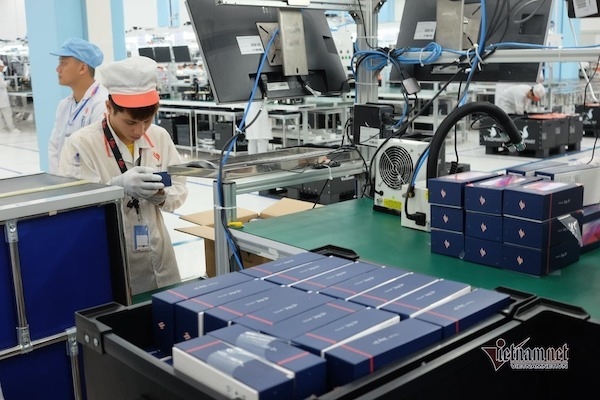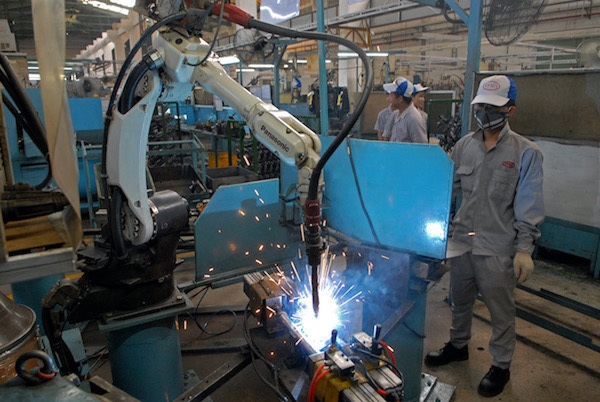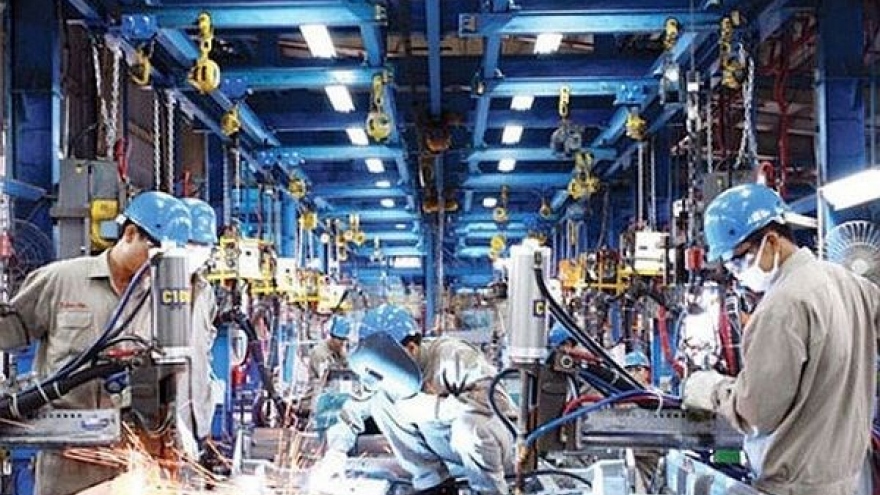When everything must be imported: developing a better support industry
If it does not take advantage of opportunities, Vietnam will need at least two more decades to reach the per capita added value in the processing and manufacturing industry for newly industrialized countries.

October 2021 saw a trade deficit for Vietnam, which showed the long-standing imbalance in self-sufficiency of production materials.
According to the General Statistics Office, in January-October 2021, Vietnam incurred a trade deficit of US$1.45 billion, of which the domestic economic sector had a trade deficit of US$22.73 billion while the FDI sector, including crude oil, had a trade surplus of US$21.28 billion.
During this period, the trade deficit with China amounted to US$45.2 billion, up more than 63%; trade deficit with the Republic of Korea was nearly US$28 billion, up by over 29%; trade deficit with ASEAN was US$10 billion, an increase of nearly 81%.
This situation is alarming as in the same period last year Vietnam had a trade surplus of nearly US$20 billion.
Import value of production materials was estimated at more than US$252 billion, up nearly 29% year on year, accounting for nearly 94% of the total import turnover of goods. The value of raw materials and fuels reached more than US$128 billion, increased by more than 35%, and that of consumer goods was estimated at over US$17 billion, up nearly 23%.
These figures once again reflect the situation that the domestic manufacturing industry is not self-sufficient in raw materials. Economist Pham Chi Lan has warned: "We have to import even toothpicks". It therefore has been difficult for Vietnamese manufacturing enterprises to rise up the value chain.
According to the Ministry of Industry and Trade, the capacity and competitiveness of the industry are still weak, reflected in the number of industrial enterprises. There are only nearly 80,000 enterprises in the manufacturing and processing industries, with limited financial and technological ability.
Industrial enterprises in Vietnam have not yet mastered core technologies, mainly engaged in stages with low technology content and low added value, and have not yet developed their own brands. The link between domestic and FDI enterprises is loose due to the limited ability of domestic enterprises.
Hard to compete internationally
Dr. Tran Dinh Thien said that Vietnam's interest rates are 2-3, even 4 times higher, than other countries in the region. Specifically, the average lending interest rate is about 8-10%, while in other countries it is down to 1% and the highest is only 4-5% during the crisis period.
On that basis, it is difficult for Vietnamese enterprises and products to compete with others.
According to the Ministry of Industry and Trade, FDI enterprises in supporting industries often borrow capital from their parent companies or from foreign banks with interest rates of only 1-3%, while local firms have to borrow capital at the interest rate of 8-10%.
This large gap has eliminated the competitiveness of domestic enterprises. Moreover, even though they bear higher interest rates than FDI enterprises, it is not easy for local firms to access long-term loans to expand production and invest in new technologies. Meanwhile, enterprises in supporting industries require large capital to invest in machinery, equipment, factories, technology, materials and highly qualified technical human resources.
Limited access to bank loans is one of the main reasons and barriers that make it difficult for local enterprises in the supporting industry to invest in production.
According to the Ministry of Planning and Investment, due to the lack of machinery and technology, many factories still use manual labor as the main source. Labor productivity in industries has not improved significantly, especially in the manufacturing industry. The average labor productivity growth rate of the whole country in the period 2011-2020 is estimated to increase by 5.1% (4.35% for the period 2011-2015 and 5.85% for 2016-2020).
The growth rate of labor productivity in industry in this period only reached 2.71%, with only 1.5% in the 2016-2020 period, which was the lowest growth rate compared to other economic sectors and the period of 2011-2015 (3.92% up). It is worrisome that the labor productivity of the processing and manufacturing industries is much lower than that of other sub-industries as well as the overall labor productivity of the economy.
In August 2020, the Government recognized the weakness of the supporting industry. In Resolution 115 on solutions to promote the development of supporting industries, the Government said that locally made products remain simple, the technology content is medium and low, and the value is small in product value structure. The ability to supply locally made products is still inadequate.
The trade deficit for raw materials, components and spare parts is large, and the localization rate of industries is still low. Vietnamese enterprises still have many limitations in terms of production management and technical technology, as well as a lack of resources to innovate. Enterprises in the manufacturing sector are similar in terms of qualifications, scale, technology and products. They do not provide enough components and spare parts that meet the requirements to participate deeply in the global production chain.
This is very worrisome in ensuring a self-sustaining economy as COVID-19 has profoundly affected production and value chains around the world.

Foresight, prompt actions
According to the Ministry of Industry and Trade, Vietnam is at the end of the first stage of industrialization and is initially moving to the stage of accelerating industrialization.
Without strong reforms in the internal structure of the industry in the direction of improving productivity, increasing the proportion of high-tech industry with high added value, along with the shift of labor from agriculture to industry, and taking advantage of the 4th Industrial Revolution, the country needs at least 20 more years to reach the per capita level of added value of the processing and manufacturing industry for newly industrialized countries according to the UNIDO classification.
It is a must to change the national industrial development policy, particularly the processing and manufacturing industry. It needs to focus on resources to promote the development of the domestic processing and manufacturing industry.
The Resolution of the 13th National Party Congress clearly stated the policy of industrialization and modernization, building a strong national industry, and said by 2025, "the proportion of the processing and manufacturing industry in GDP will reach over 25% of GDP.”
The country aims to “develop the processing and manufacturing industry as the center; develop a smart manufacturing industry as a breakthrough” in the national industrial development policy to 2030, with a vision to 2045.
These are very ambitious and visionary development guidelines and directions. But it is more important to bring these policies to life.


